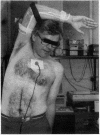Abstract
There are few published data on the ranges of available motion at the shoulder and no clinical technique for the assessment of three dimensional movement. An electromagnetic movement sensor (Isotrak), which makes three dimensional measurements of shoulder movement and measures the ranges of flexion, extension, abduction in the neutral position, abduction preceded by external rotation, and internal rotation achieved by placing the hand as far up the back as possible, was used to study 16 normal subjects. Intraobserver repeatability was good, and a study of five subjects by two observers showed no significant difference between single measurements made by each. The measured ranges were in broad agreement with published data, though they tended to be smaller. This was attributed to either the bulk of the mounting for the movement sensor or to the immobilisation of the elbow and hence the biceps muscle. Women had greater ranges, except for externally rotated abduction.
Full text
PDF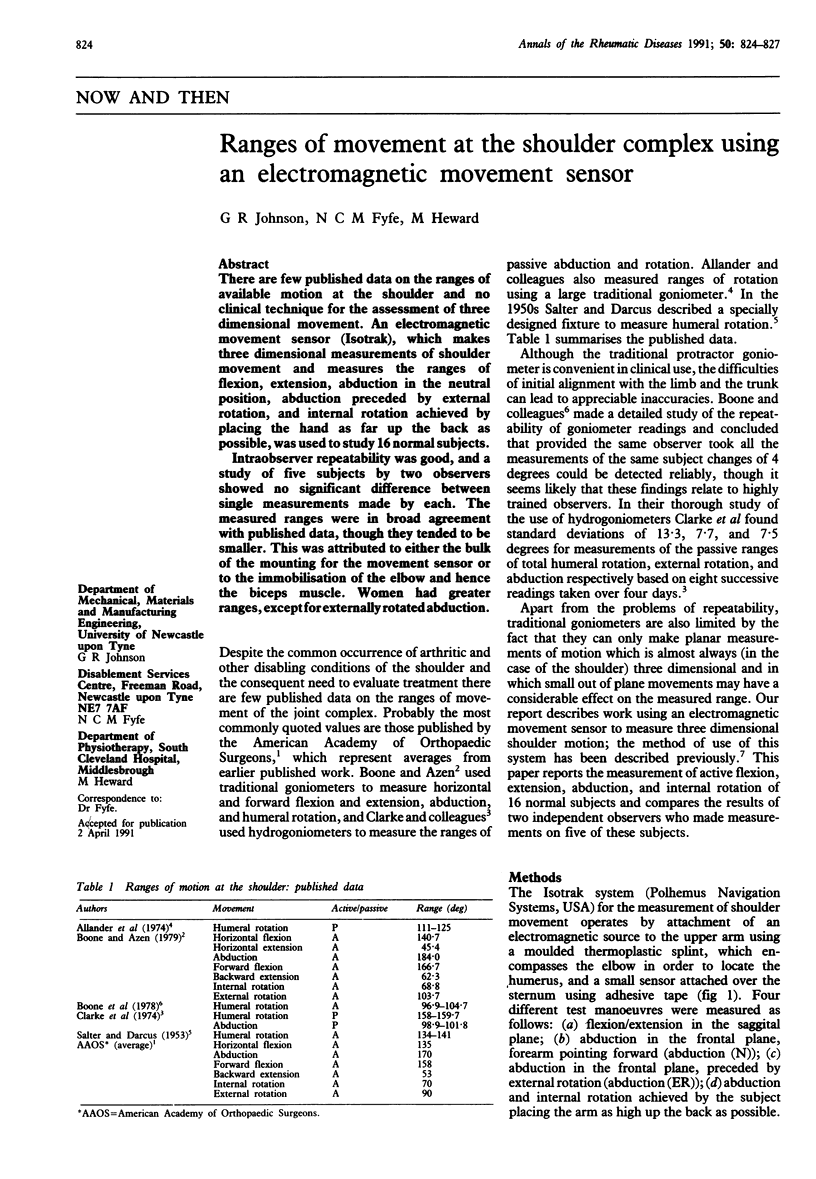
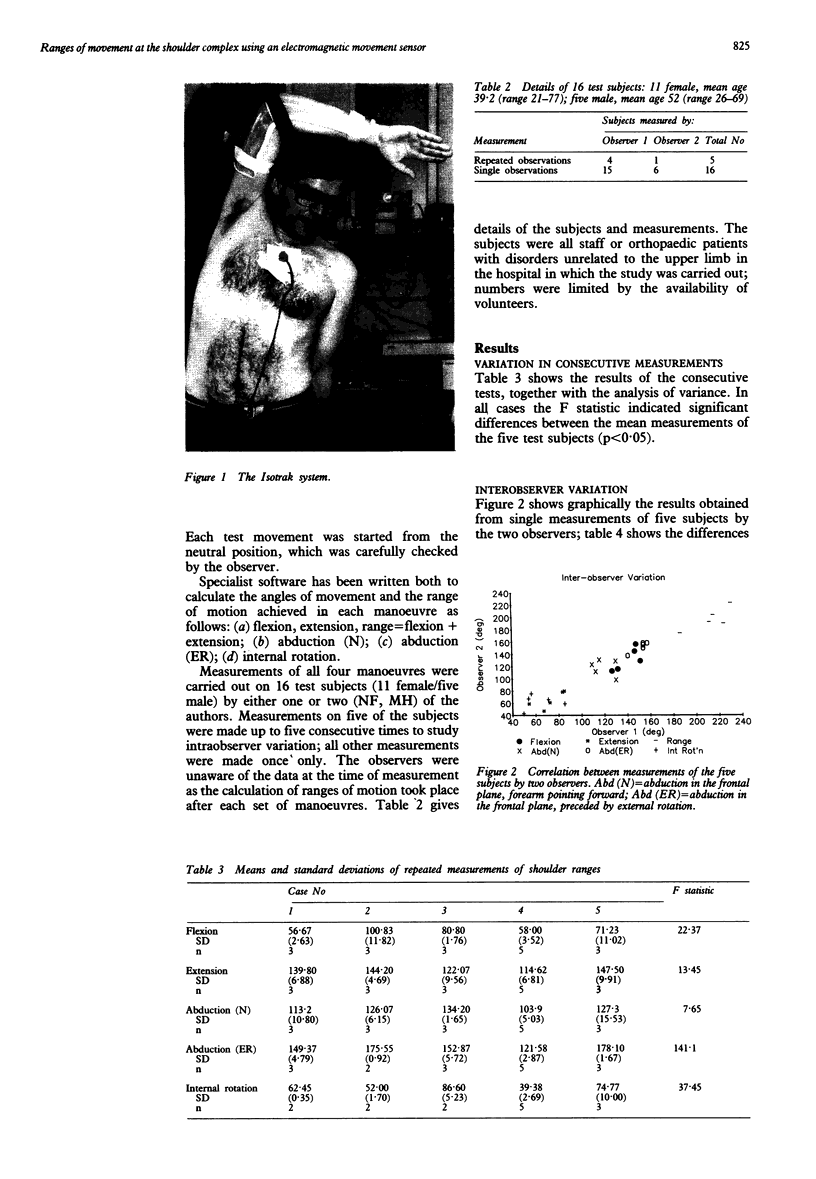
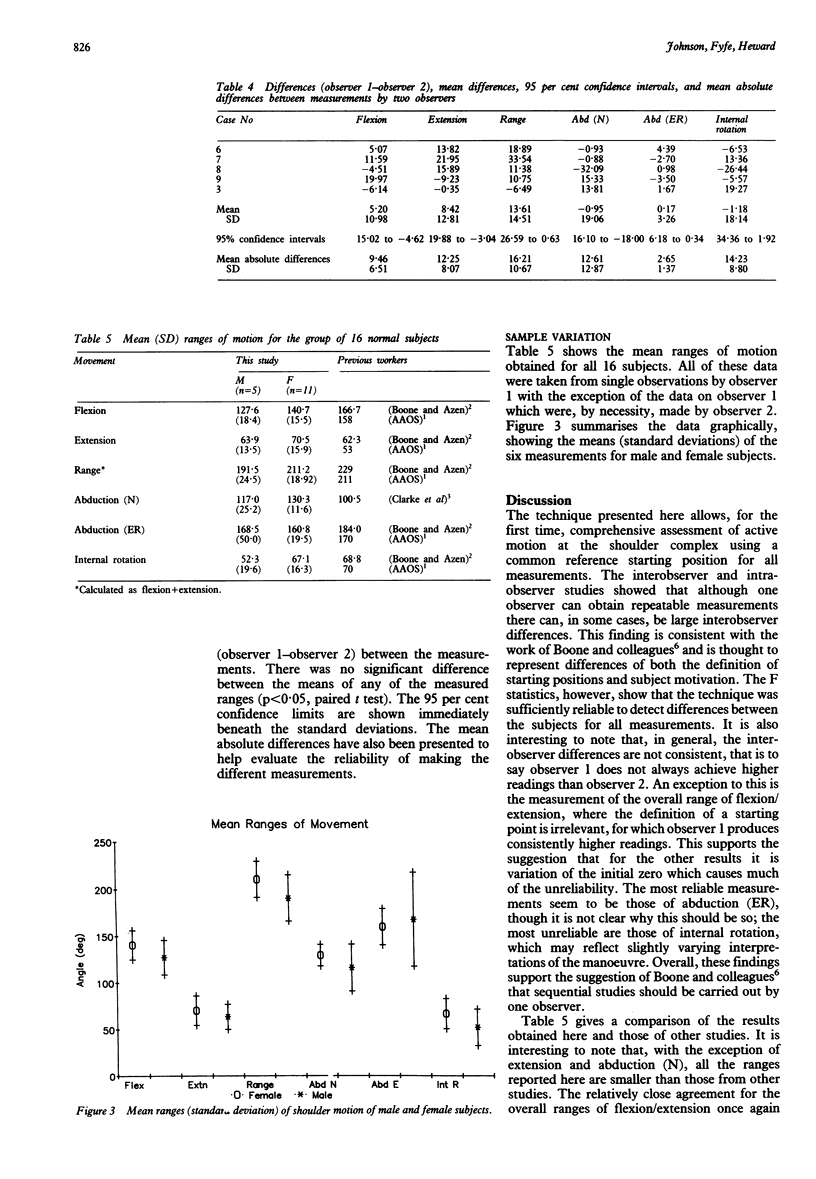
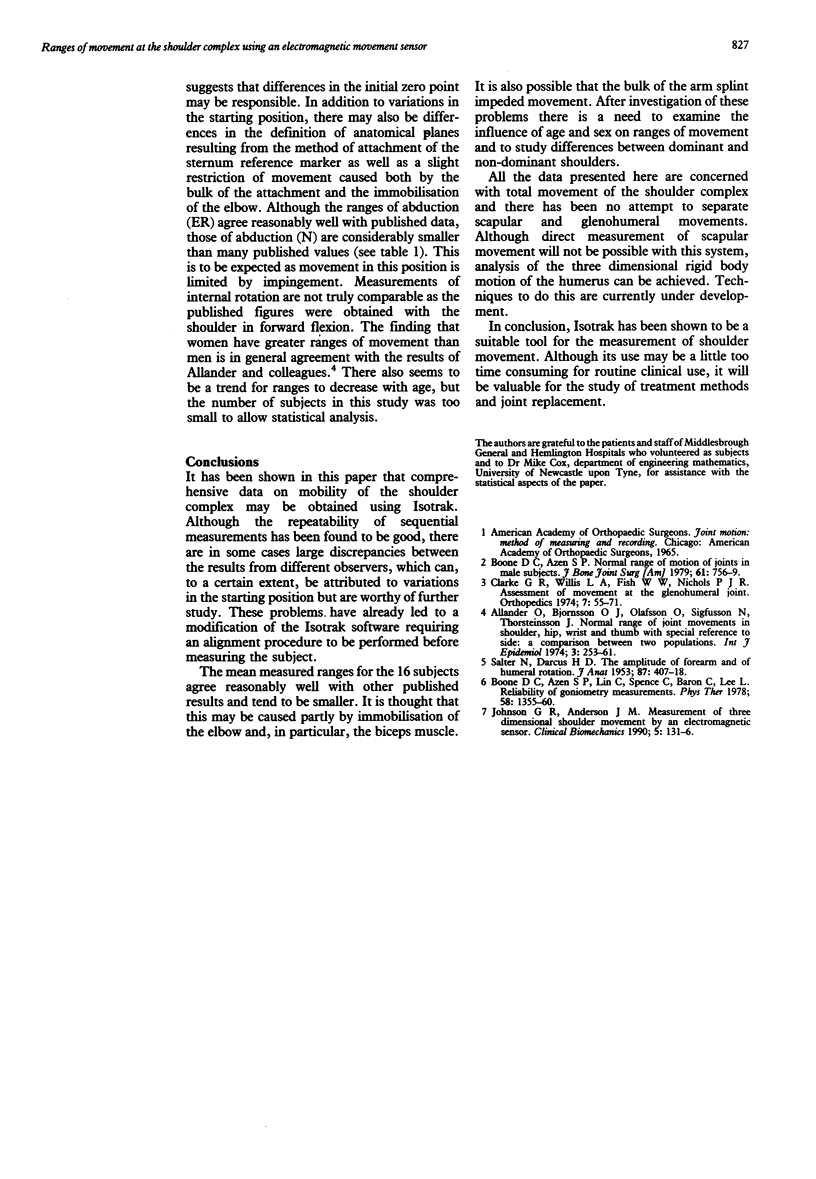
Images in this article
Selected References
These references are in PubMed. This may not be the complete list of references from this article.
- Allander E., Björnsson O. J., Olafsson O., Sigfússon N., Thorsteinsson J. Normal range of joint movements in shoulder, hip, wrist and thumb with special reference to side: a comparison between two populations. Int J Epidemiol. 1974 Sep;3(3):253–261. doi: 10.1093/ije/3.3.253. [DOI] [PubMed] [Google Scholar]
- Boone D. C., Azen S. P., Lin C. M., Spence C., Baron C., Lee L. Reliability of goniometric measurements. Phys Ther. 1978 Nov;58(11):1355–1360. doi: 10.1093/ptj/58.11.1355. [DOI] [PubMed] [Google Scholar]
- Boone D. C., Azen S. P. Normal range of motion of joints in male subjects. J Bone Joint Surg Am. 1979 Jul;61(5):756–759. [PubMed] [Google Scholar]
- SALTER N., DARCUS H. D. The amplitude of forearm and of humeral rotation. J Anat. 1953 Oct;87(4):407–418. [PMC free article] [PubMed] [Google Scholar]



